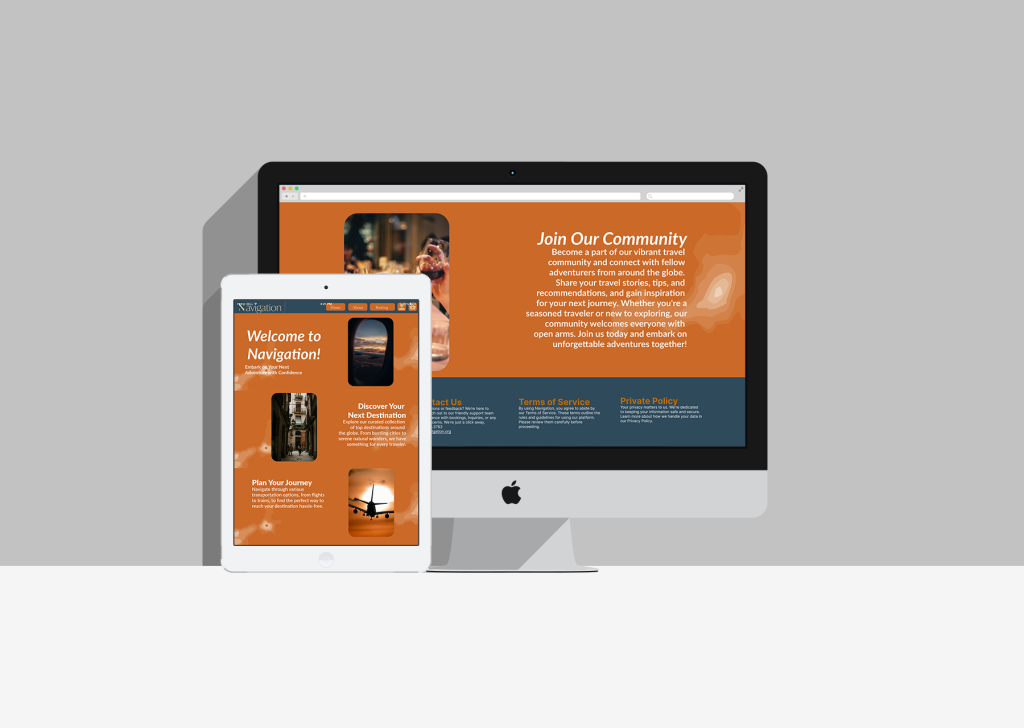Interface Integration
Integrating Skills from Logo Design
to Website Development
This project marks the synthesis of various skills acquired across multiple classes, resulting in a comprehensive and polished final product. From the logo design crafted during a drawing class project to the initial website layout developed in Illustrator, culminating in the final interface meticulously crafted using Figma, this project exemplifies a journey of interdisciplinary learning and application.

Ideation and Sketching
Conceptualizing Logo and Website Layout

Initiating the project with thumbnail sketches, the focus centered on conceptualizing a logo that embodied the essence of travel. After brainstorming travel-related themes, the decision was made to emphasize navigation, leading to the creation of a logo featuring an “N” with arrow accents. Subsequently, attention shifted to planning the website’s aesthetics, envisioning a background adorned with a topographic map, and outlining the structure of each webpage.
Translating Design
into Functionality
Expanding from Illustrator to Figma
Progressing from the initial website layout to Figma, the project underwent expansion, incorporating additional pages such as the home page and about page. Existing pages were consolidated into a unified web layout, with particular emphasis placed on the booking page. Content creation and image selection ensued, followed by the meticulous process of prototyping and ensuring the seamless functionality of the website.

Seamless Integration,
Polished Prototype
Culmination of Diverse Learning Experiences

This project is a testament to the integration of skills acquired across various disciplines, resulting in a cohesive and functional website interface. From the foundational logo design to the intricate webpage layouts, each development phase contributed to an enriching learning experience, enhancing proficiency in design principles and interdisciplinary application. The culmination of this project not only yielded a polished and functional prototype but fostered a deeper understanding of design processes and their practical applications in real-world projects.
